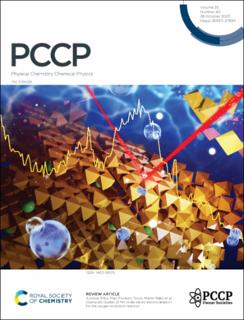| dc.contributor.author | Erbe, Andreas | |
| dc.contributor.author | Tesch, Marc Frederic | |
| dc.contributor.author | Rüdiger, Olaf | |
| dc.contributor.author | Kaiser, Bernhard | |
| dc.contributor.author | DeBeer, Serena | |
| dc.contributor.author | Rabe, Martin | |
| dc.date.accessioned | 2023-11-27T09:10:55Z | |
| dc.date.available | 2023-11-27T09:10:55Z | |
| dc.date.created | 2023-09-15T11:50:10Z | |
| dc.date.issued | 2023 | |
| dc.identifier.citation | Physical Chemistry, Chemical Physics - PCCP. 2023, 25 (40), 26958-26971. | en_US |
| dc.identifier.issn | 1463-9076 | |
| dc.identifier.uri | https://hdl.handle.net/11250/3104728 | |
| dc.description.abstract | Inspired by photosystem II (PS II), Mn oxide based electrocatalysts have been repeatedly investigated as catalysts for the electrochemical oxygen evolution reaction (OER), the anodic reaction in water electrolysis. However, a comparison of the conditions in biological OER catalysed by the water splitting complex CaMn4Ox with the requirements for an electrocatalyst for industrially relevant applications reveals fundamental differences. Thus, a systematic development of artificial Mn-based OER catalysts requires both a fundamental understanding of the catalytic mechanisms as well as an evaluation of the practicality of the system for industrial scale applications. Experimentally, both aspects can be approached using in situ and operando methods including spectroscopy. This paper highlights some of the major challenges common to different operando investigation methods and recent insights gained with them. To this end, vibrational spectroscopy, especially Raman spectroscopy, absorption techniques in the bandgap region and operando X-ray spectroelectrochemistry (SEC), both in the hard and soft X-ray regime are particularly focused on here. Technical challenges specific to each method are discussed first, followed by challenges that are specific to Mn oxide based systems. Finally, recent in situ and operando studies are reviewed. This analysis shows that despite the technical and Mn specific challenges, three specific key features are common to most of the studied systems with significant OER activity: structural disorder, Mn oxidation states between III and IV, and the appearance of layered birnessite phases in the active regime. | en_US |
| dc.language.iso | eng | en_US |
| dc.publisher | Royal Society of Chemistry | en_US |
| dc.rights | Navngivelse 4.0 Internasjonal | * |
| dc.rights.uri | http://creativecommons.org/licenses/by/4.0/deed.no | * |
| dc.title | Operando studies of Mn oxide based electrocatalysts for the oxygen evolution reaction | en_US |
| dc.title.alternative | Operando studies of Mn oxide based electrocatalysts for the oxygen evolution reaction | en_US |
| dc.type | Peer reviewed | en_US |
| dc.type | Journal article | en_US |
| dc.description.version | publishedVersion | en_US |
| dc.source.pagenumber | 26958-26971 | en_US |
| dc.source.volume | 25 | en_US |
| dc.source.journal | Physical Chemistry, Chemical Physics - PCCP | en_US |
| dc.source.issue | 40 | en_US |
| dc.identifier.doi | 10.1039/d3cp02384b | |
| dc.identifier.cristin | 2175445 | |
| cristin.ispublished | true | |
| cristin.fulltext | original | |
| cristin.qualitycode | 2 | |

